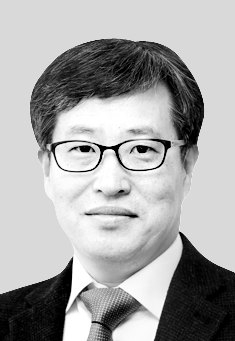Breaking the greenbelt taboo

The author is an editorial writer of the JoongAng Ilbo.
The Moon Jae-in administration is trapped in its real estate policy. The more it tries to untangle it, the bigger of a snarl it gets into. The result is a messy chain of makeshift measures. Its arrogance in trying to bring “justice” to the market has backfired.
The government has belatedly shifted the direction of its real estate policy from controlling demand to increasing supply. But the market responded lukewarmly. Its plan to redeem 90 percent of profits made from extra space by allowing greater density in apartment redevelopments was met with a cold response by landlord cooperatives in older residential neighborhoods. Some of them are out to go their own way and build high-end units with their own money.
A plan to supply 50,000 out of 130,000 new apartments through high-density redevelopments has stumbled even before it has taken off. Other projects — converting state-owned properties like Taeneung golf course and a site reserved for Seoul Lite DMC Tower in Sangam-dong, western Seoul — have met strong resistance from residents.
That leaves the greenbelt option. Moon has ordered the government to “find sites, if necessary, to increase housing supplies.” But there is little land left in Seoul. Easing some of the greenbelt areas was briefly raised as an option, but was struck down. The Aug. 4 supply measure lacked essence, fanning a panicky buying spree with fears of a supply shortage.
The defense over the greenbelt around Seoul is based on environmental reasoning that it should be preserved for the future. It has some truth, but is nevertheless ironic. Ninety percent of the government’s third suburban developments in outer Seoul now under construction are in greenbelt zones. Half of them were the highest grade on the environmental preservation scale. Does that mean the greenbelt outside Seoul is less valuable? If the greenbelt in Gangnam is off-limits, why is the government proposing ruining Taeneung Golf Course, which is a second-grade preservation site?
![Hong Nam-ki, finance minister and deputy prime minister for the economy, on Aug. 10 explains a government plan to redeem 90 percent of profits made from extra space by allowing greater density in apartment redevelopments. [NEWS1]](https://koreajoongangdaily.joins.com/data/photo/2020/08/16/9ba5a21f-d418-4e67-9960-72907ae8a77e.jpg)
Hong Nam-ki, finance minister and deputy prime minister for the economy, on Aug. 10 explains a government plan to redeem 90 percent of profits made from extra space by allowing greater density in apartment redevelopments. [NEWS1]
Every time there is talk about yielding some of the greenbelt for residential purposes, the liberal front opposes the idea and instead argues for greater increases in public rent. At first glance, that sounds reasonable. But reality shows otherwise. Even local government heads aligned to the ruling party oppose the idea of building cheaper apartments for public rent. Instead of wasting time over unrealistic ideas, already-damaged land in greenbelt zone needs to be turned into sites for homes for public rent. Didn’t the government propose increasing public rent in some greenbelt zones in its housing outlines three years ago?
Fighting the market and forcing “justice” even when demand is low for public rent is useless. A more creative approach is needed. If sufficient, good-quality public rent becomes available in appealing locations, they can calm the panicky home buying sprees. The hopelessness of the young has been aggravated by real estate problems. They have lost hope in building a family as they cannot afford a home. What use is it clinging to greenery when the young are suffering? The future is theirs too. We must give them hope by breaking the greenbelt taboo.










with the Korea JoongAng Daily
To write comments, please log in to one of the accounts.
Standards Board Policy (0/250자)